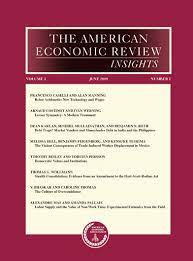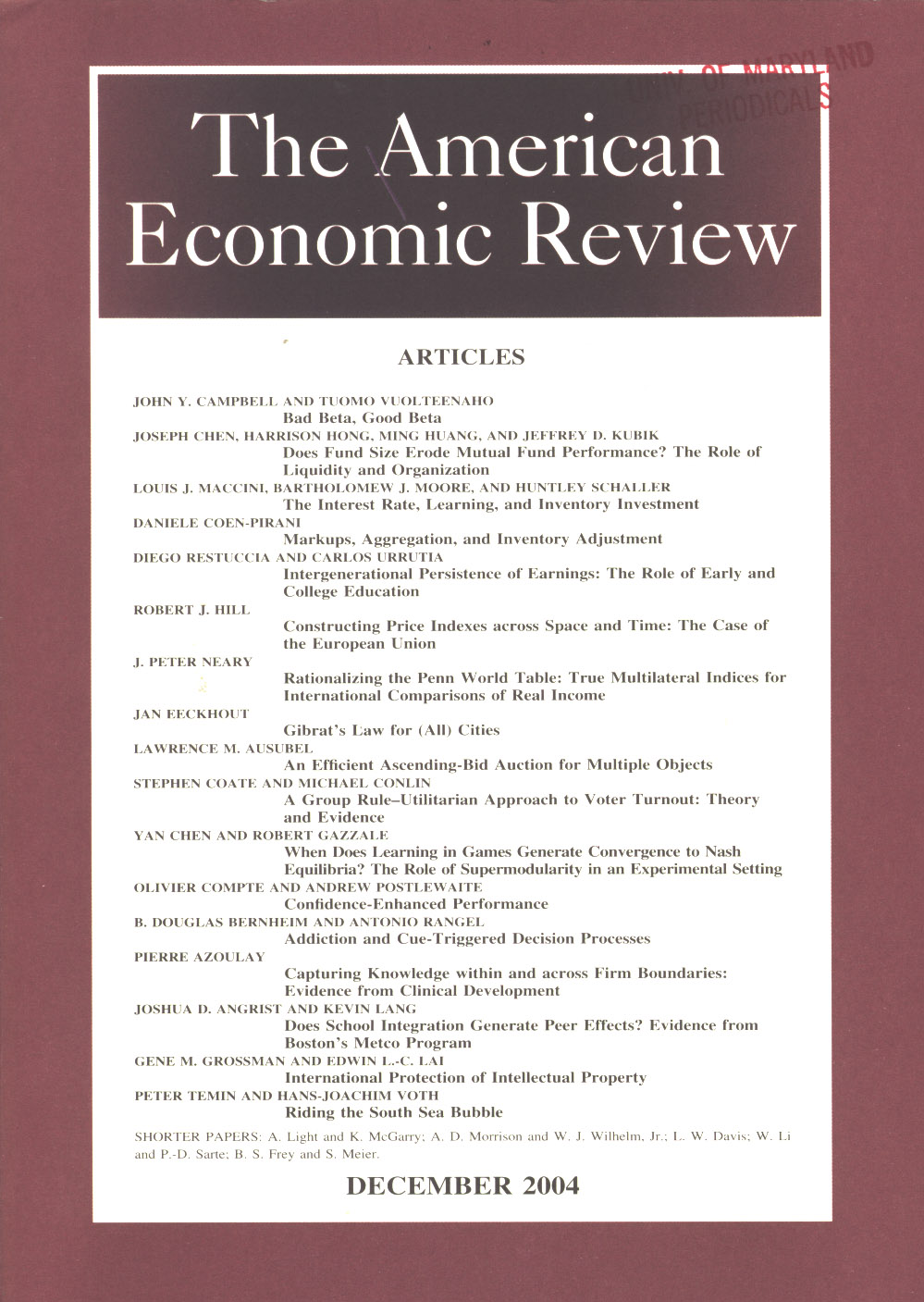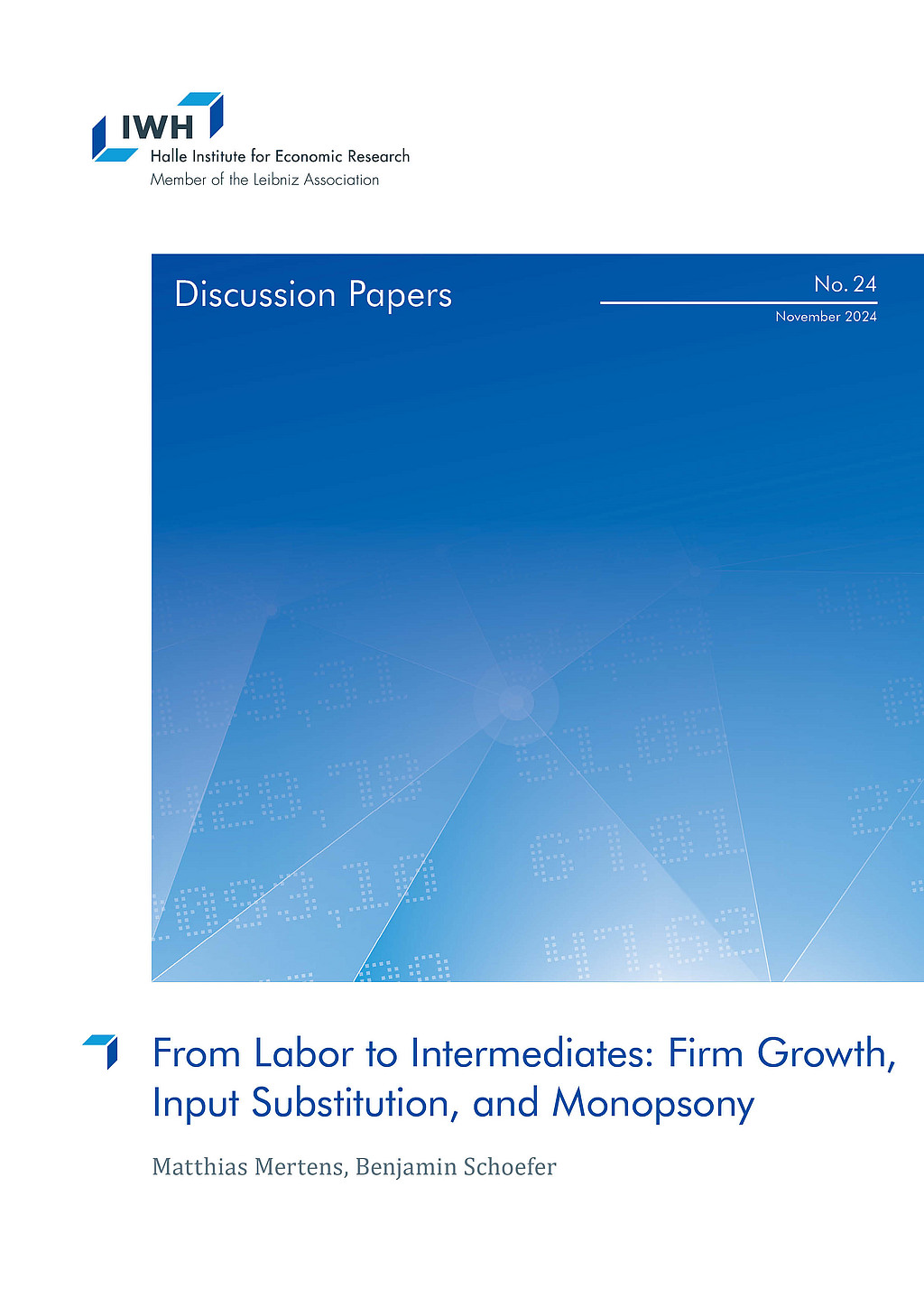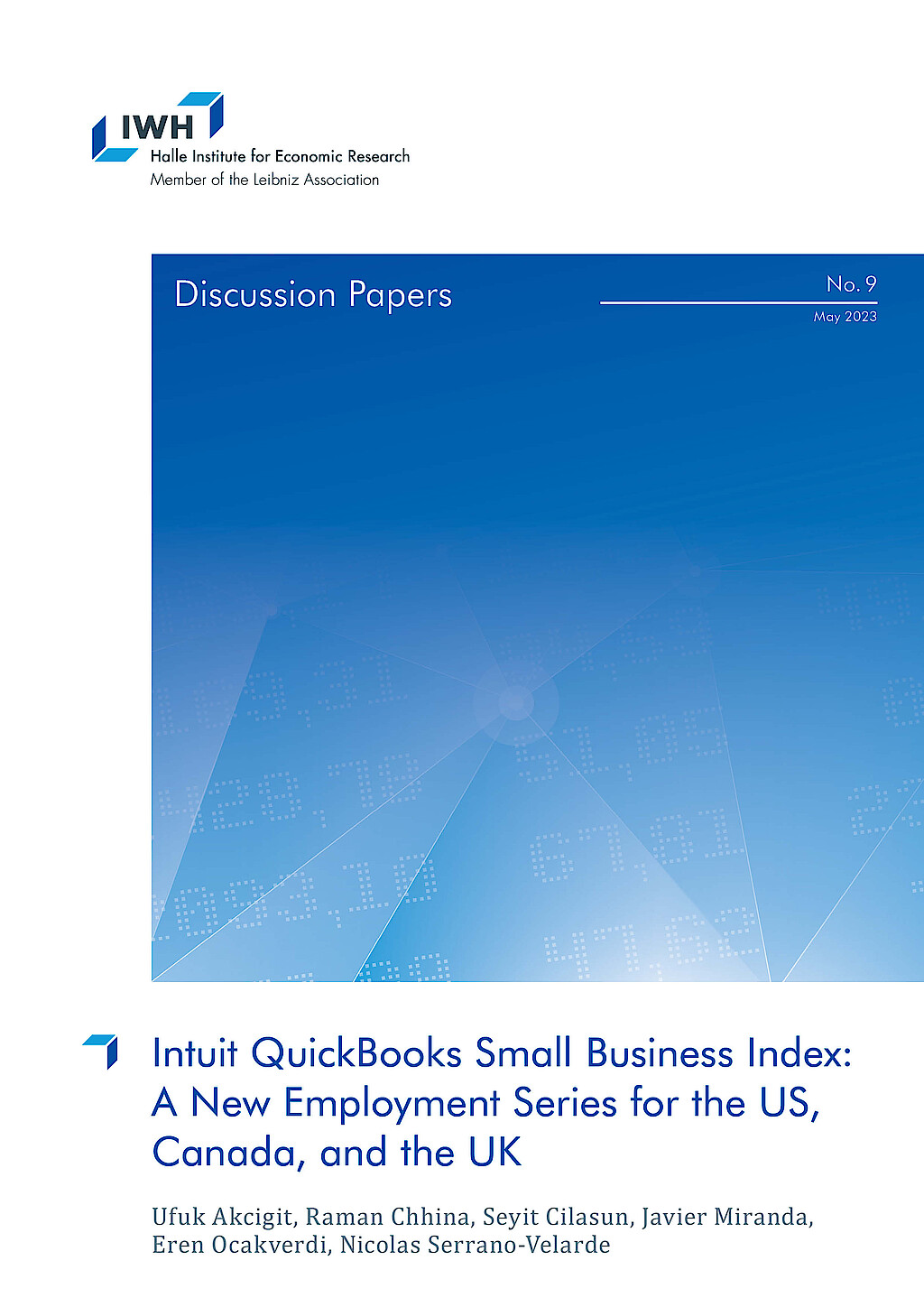Entrepreneurship, Innovation, and Productivity Growth
The research group “Entrepreneurship, Innovation, and Productivity Growth” tackles a broad set of research topics that are of relevance for our understanding of patterns of innovation and productivity growth and explores implications for workers and firms. Areas of particular focus include the decline in business dynamism, the growth in automation, entrepreneurship and innovation, and supply chains. The work is empirical in focus, it is grounded in microeconomic data research, but seeks to understand relevant macroeconomic trends.
Workpackage 1: Business Dynamism
The last decade has seen the explosion of research on business dynamism largely as a result of the development of new comprehensive firm and establishment level micro datasets. In this workpackage we exploit existing CompNet data to understand patterns of business dynamism in Europe.
In particular this subgroup seeks to explain the role of technological change and market power. The team documents the decline in young firm activity and reallocation, and estimates models that assess the causes and impacts on productivity growth (with Matthias Mertens, Sergio Inferrara, and Filippo Biondi).
Workpackage 2: Entrepreneurship
Going back to the days of Schumpeter, economists understand the important role entrepreneurs play in modern capitalist economies. This workpackage sets up a collaboration with the ZEW to develop a new data infrastructure and explore entrepreneurship in Germany broadly. Areas of research include:
a. Entrepreneurship and Firm Performance: Understanding High Growth Firms.
b. Innovative Firms and the Diffusion of Technology
c. (Im)Migration, Entrepreneurship and Regional Development
Workpackage 3: Automation
The introduction of robots and automation technologies in the workplace are fundamentally altering the balance of tasks and skills that are in demand. At the same time automation technologies increase the productivity of the workers and firms that make use of them relative to those that do not and can potentially lead to winners and losers. In this workpackage we conduct research on robot automation and its impacts on workers and firms. We focus our research both in Germany and the U.S..
The research group makes use of various administrative and survey datasets from a variety of sources and countries.
IWH Data Project: CompNet Database
The Competitiveness Research Network (CompNet) is a research network founded in 2012 to foster the debate on competitiveness issues among partner institutions and researchers. It aims at providing a robust theoretical and empirical link between micro-level drivers of competitiveness and macroeconomic performance for research and policy analysis purposes.
CompNet is funded by various European institutions, including among others: European Bank of Reconstruction and Development (EBRD); European Central Bank (ECB); European Commission (EC); European Investment Bank (EIB); European Stability Mechanism (ESM); France Stratégie; German Council of Economic Experts, Halle Institute for Economic Research (IWH); German Federal Ministry of Economic Affairs and Climate Action (BMWK); Tinbergen Institute (TI). CompNet is advised by leading researchers in the field of firm performance and has created a European micro-aggregated industry- and country-level database on indicators of firm- and country-level competitiveness and performance.
The database is unique in terms of its coverage and contents, particularly as, although being aggregated, it contains rich information on firm heterogeneity (i.e., distributional characteristics, like standard deviations and various percentiles of the firm distributions) across a large set of countries and industries in Europe. Among others, key variables included in the database are indicators of firm productivity, market power, firms’ financial situation, trade, and firm dynamics.
Research Cluster
Productivity and InstitutionsYour contact

- Department Centre for Business and Productivity Dynamics, Cbpd
Refereed Publications

The (Heterogeneous) Economic Effects of Private Equity Buyouts
in: Management Science, forthcoming
Abstract
<p>The effects of private equity buyouts on employment, productivity, and job reallocation vary tremendously with macroeconomic and credit conditions, across private equity groups, and by type of buyout. We reach this conclusion by examining the most extensive database of U.S. buyouts ever compiled, encompassing thousands of buyout targets from 1980 to 2013 and millions of control firms. Employment shrinks 12% over two years after buyouts of publicly listed firms—on average, and relative to control firms—but expands 15% after buyouts of privately held firms. Postbuyout productivity gains at target firms are large on average and much larger yet for deals executed amid tight credit conditions. A postbuyout tightening of credit conditions or slowing of gross domestic product growth curtails employment growth and intrafirm job reallocation at target firms. We also show that buyout effects differ across the private equity groups that sponsor buyouts, and these differences persist over time at the group level. Rapid upscaling in deal flow at the group level brings lower employment growth at target firms. We relate these findings to theories of private equity that highlight agency problems at portfolio firms and within the private equity industry itself.</p>

Reservation Raises: The Aggregate Labour Supply Curve at the Extensive Margin
in: Review of Economic Studies, No. 1, 2025
Abstract
We measure desired labour supply at the extensive (employment) margin in two representative surveys of the U.S. and German populations. We elicit reservation raises: the percent wage change that renders a given individual indifferent between employment and nonemployment. It is equal to her reservation wage divided by her actual, or potential, wage. The reservation raise distribution is the nonparametric aggregate labour supply curve. Locally, the curve exhibits large short-run elasticities above 3, consistent with business cycle evidence. For larger upward shifts, arc elasticities shrink towards 0.5, consistent with quasi-experimental evidence from tax holidays. Existing models fail to match this nonconstant, asymmetric curve.

The Characteristics and Geographic Distribution of Robot Hubs in U.S. Manufacturing Establishments
in: American Economic Association Papers and Proceedings, May 2023
Abstract
We use establishment-level data from the US Census Bureau's Annual Survey of Manufactures to study the characteristics and geographic locations of investments in robots. We find that the distribution of robots is highly skewed across locations. Some locations, which we call Robot Hubs, have far more robots than one would expect even after accounting for industry and manufacturing employment. We characterize these Robot Hubs along several industry, demographic, and institutional dimensions. The presences of robot integrators, which specialize in helping manufacturers install robots, and of higher levels of union membership are positively correlated with being a Robot Hub.

Immigration and Entrepreneurship in the United States
in: American Economic Review: Insights, No. 1, 2022
Abstract
Immigration can expand labor supply and create greater competition for native-born workers. But immigrants may also start new firms, expanding labor demand. This paper uses U.S. administrative data and other data resources to study the role of immigrants in entrepreneurship. We ask how often immigrants start companies, how many jobs these firms create, and how these firms compare with those founded by U.S.-born individuals. A simple model provides a measurement framework for addressing the dual roles of immigrants as founders and workers. The findings suggest that immigrants act more as "job creators" than "job takers" and that non-U.S. born founders play outsized roles in U.S. high-growth entrepreneurship

Changing Business Dynamism and Productivity: Shocks versus Responsiveness
in: American Economic Review, No. 12, 2020
Abstract
The pace of job reallocation has declined in the United States in recent decades. We draw insight from canonical models of business dynamics in which reallocation can decline due to (i) lower dispersion of idiosyncratic shocks faced by businesses, or (ii) weaker marginal responsiveness of businesses to shocks. We show that shock dispersion has actually risen, while the responsiveness of business-level employment to productivity has weakened. Moreover, declining responsiveness can account for a significant fraction of the decline in the pace of job reallocation, and we find suggestive evidence this has been a drag on aggregate productivity.
Working Papers

Credit Card Entrepreneurs
in: IWH Discussion Papers, No. 5, 2025
Abstract
<p>Utilizing near real-time QuickBooks data from over 1.6 million small businesses and a targeted survey, this paper highlights the critical role credit card financing plays for small business activity. We examine a two year period beginning in January of 2021. A turbulent period during which, credit card usage by small U.S. businesses nearly doubled, interest payments rose by 60%, and delinquencies reached 2.8%. We find, first, monthly credit card payments were up to three times higher than loan payments during this time. Second, we use targeted surveys of these small businesses to establish credit cards as a key financing source in response to firm-level shocks, such as uncertain cash flows and overdue invoices. Third, we establish the importance of credit cards as an important financial transmission mechanism. Following the Federal Reserve’s rate hikes in early 2022, banks cut credit card supply, leading to a 15.75% drop in balances and a 10% decline in revenue growth, as well as a 1.5% decrease in employment growth among U.S. small businesses. These higher rates also rendered interest payments unsustainable for many, contributing to half of the observed increase in delinquencies. Lastly, a simple heterogeneous firm model with a cash-in-hand constraint illustrates the significant macroeconomic impact of credit card financing on small business activity.</p>

Reassessing EU Comparative Advantage: The Role of Technology
in: IWH Discussion Papers, No. 26, 2024
Abstract
<p>Based on the sufficient statistics approach developed by Huang and Ottaviano (2024), we show how the state of technology of European industries relative to the rest of the world can be empirically assessed in a way that is simple in terms of computation, parsimonious in terms of data requirements, but still comprehensive in terms of information. The lack of systematic cross-industry correlation between export specialization and technological advantage suggests that standard measures of revealed comparative advantage only imperfectly capture a country’s technological prowess due to the concurrent influences of factor prices, market size, markups, firm selection and market share reallocation.</p>

From Labor to Intermediates: Firm Growth, Input Substitution, and Monopsony
in: IWH Discussion Papers, No. 24, 2024
Abstract
<p>We document and dissect a new stylized fact about firm growth: the shift from labor to intermediate inputs. This shift occurs in input quantities, cost and output shares, and output elasticities. We establish this fact using German firm-level data and replicate it in administrative firm data from 11 additional countries. We also document these patterns in micro-aggregated industry data for 20 European countries (and, with respect to industry cost shares, for the US). We rationalize this novel regularity within a parsimonious model featuring (i) an elasticity of substitution between intermediates and labor that exceeds unity, and (ii) an increasing shadow price of labor relative to intermediates, due to monopsony power over labor or labor adjustment costs. The shift from labor to intermediates accounts for one half to one third of the decline in the labor share in growing firms (the remainder is due to wage markdowns and markups) and rationalizes most of the labor share decline in growing industries.</p>

Declining Job Reallocation in Europe: The Role of Shocks, Market Power, and Technology
in: IWH Discussion Papers, No. 19, 2023
Abstract
<p>We study changes in job reallocation in Europe after 2000 using novel microaggregated data that we collected for 19 European countries. In all countries, we document broad-based declines in job reallocation rates that concern most economic sectors and size classes. These declines are mainly driven by dynamics within sectors, size, and age classes rather than by compositional changes. Simultaneously, employment shares of young firms decline. Consistent with US evidence, firms’ employment has become less responsive to productivity shocks. However, the dispersion of firms’ productivity shocks has decreased too. To enhance our understanding of these patterns, we derive and apply a firm-level framework that relates changes in firms’ market power, labor market imperfections, and production technology to firms’ responsiveness and job reallocation. Using German firm-level data, we find that changes in markups and labor output elasticities, rather than adjustment costs, are key in rationalizing declining responsiveness.</p>

Intuit QuickBooks Small Business Index: A New Employment Series for the US, Canada, and the UK
in: IWH Discussion Papers, No. 9, 2023
Abstract
Small and young businesses are essential for job creation, innovation, and economic growth. Even most of the superstar firms start their business life small and then grow over time. Small firms have less internal resources, which makes them more fragile and sensitive to macroeconomic conditions. This suggests the need for frequent and real-time monitoring of the small business sector’s health. Previously this was difficult due to a lack of appropriate data. This paper fills this important gap by developing a new Intuit QuickBooks Small Business Index that focuses on the smallest of small businesses with at most 9 workers in the US and the UK and at most 19 workers in Canada. The Index aggregates a sample of anonymous Quick- Books Online Payroll subscriber data (QBO Payroll sample) from 333,000 businesses in the US, 66,000 in Canada, and 25,000 in the UK. After comparing the QBO Payroll sample data to the official statistics, we remove the seasonal components and use a Flexible Least Squares method to calibrate the QBO Payroll sample data against official statistics. Finally, we use the estimated model and the QBO Payroll sample data to generate a near real-time index of economic activity. We show that the estimated model performs well both in-sample and out-of-sample. Additionally, we use this analysis for different regions and industries. Keywords:













